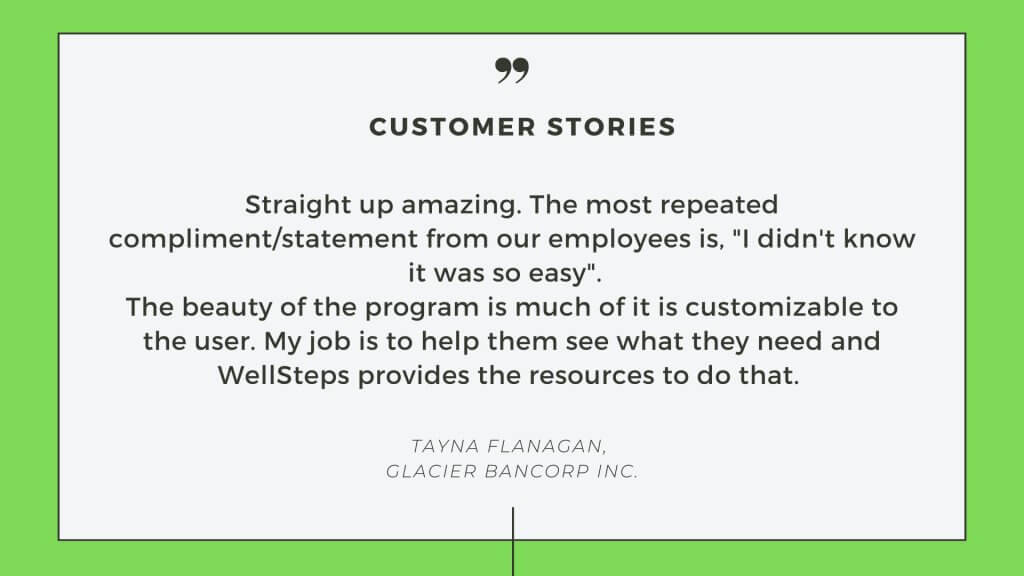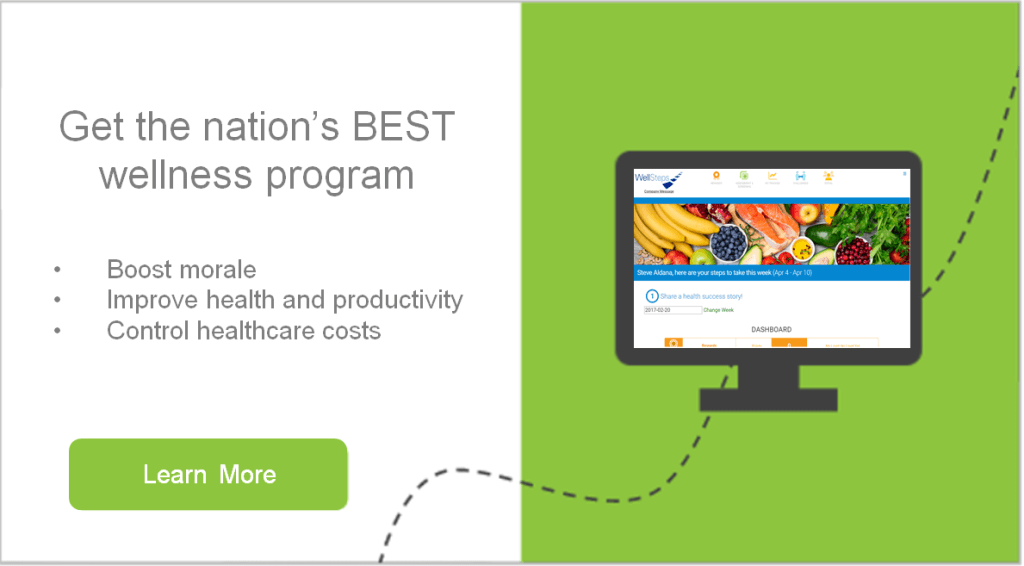It may seem difficult to know how to improve mental health in the workplace because things are hardly ever easily measurable like with physical health. However, mental health has a far greater effect upon the well-being of individuals than originally thought.

For example, when employees with common mental health issues such as depression are given programs and assistance for improvement, nearly 86% of those employees agree their ability to perform better at work has improved.
Assisting your employees with being able to improve their mental health is not only going to have almost immeasurable benefits to their personal lives, but it will also have a cascading effect in the workplace. You will see:
- improved moral and work culture
- increased motivation and engagement in work
- decreased absenteeism and presenteeism
- better productivity and efficiency
- communication abilities improved
- less conflict and greater solution orientation
7 Ideas for How to Improve Mental Health in the Workplace
It’s important to remember that the topic of mental health or mental illness can still seem taboo or frowned upon. Fortunately that dynamic has been changing over the recent years, especially with the world-wide pandemic of 2020. With over 80% of workers looking for employers that provide mental health benefits, it cannot be left out of the health and wellness program of your organization.
These are some of our favorite ways of how to improve mental health in the workplace to get your started:
- train all leaders on the signs of mental health crisis
- teach mindfulness and the benefits of morning routines
- provide meditation classes and breaks to support it
- allow employees to exercise or go on walks during the workday
- set realistic targets alongside your employees
- plan activities that incorporate laughter
- have lunch-and-learns on healing techniques and destressing practices
Some of these may require policies to be put into place. But most are very culture oriented and are greatly impacted by the views and support of your leadership and managers. Take the steps to incorporate what you feel is appropriate and ensure you have people in your organization on board, then you’ll soon see the benefits.
RELATED: 11 Unique Ways for Reducing Stress Levels in the Workplace
Train Leaders on Signs of Mental Health Crisis
You may need to bring in an expert in this field from your local health department or insurance company to ensure this kind of training is thoroughly effective. There may be small and simple things that when discussed can make a life or death difference in the life of one of your employees. Keep in mind as well:
- Always have access to suicide hotlines if they ever need to be called.
- Know what options and resources are available through your insurance. Some things may already come with the plans you have in place.
- Have counselors on staff in your HR department that can spend time talking with employees needing extra support.
- Provide the environment that helps employees feel safe and welcome to discuss struggles they may be going through without feeling judged or biased against.

Unfortunately, mental breakdowns and suicide happen too often when they can be prevented, even in the work place. Never feel like your people are being too cautious when they could be saving a life.
RELATED: How Leadership Can Support Wellness Program Participation
Teach Mindfulness & the Benefits of Morning Routines
The more aware we are about ourselves, what’s going on inside, and our surroundings, the calmer and resilient we become. Mindfulness has more benefits than what most people realize, especially in the workplace.
- depression and anxiety symptoms lower
- overall stress and tension decreases
- ability to keep calm amidst strong emotions
- sharper memory and less brain fogginess
- better communication and co-working relationships
Mindfulness goes hand in hand with healthy morning routines. When your employees take the time to ease into their day and improve their mental state before coming into work, everyone benefits. If you can, keep the schedules not so early that your team members are able to spend the time before work for themselves as much as possible. It’s been shown that morning routines support a better overall state of being, especially at work .
RELATED: 10 Tips to Implement Mindfulness in the Workplace
Provide Meditation Classes & Breaks to Support the Practice
Taking mindfulness up a notch is meditation. The science is undeniable how much meditation makes a difference in everyone’s mental health and wellbeing. The ability to positively influence our healthy gene expression and down regulate negative responses that contribute to a healthy livelihood is paramount.
Bring in a meditation teacher to teach basics or more advanced levels of meditation depending on your employees’ practice. If possible, provide access to meditation apps like Headspace and Calm employees can use right on their phones.

If possible, create a quiet space where employees are welcome to spend 10-15 minutes and have their own meditation practice during breaks. Or at least allow them the undisturbed time if they desire and you’ll soon see great improvement in their mental wellbeing.
Allow Time For Walking and Exercise
You’ll be amazed at how much energy, clear thinking, and better moods your employees have after they come back from exercising. Ideally, having an onsite gym will encourage your employees to use it more and save travel time. If not, try:
- getting discounts from nearby gyms or recreation centers
- provide walking path ideas that start and finish on the worksite
- organizing lawn games that can be played right outside
- schedule walking meetings if all are able to join in that way
Not only will the increased activity provide physical health benefits, it’s one of the greatest things to do for mental health benefits as well. Even just adding opportunities for increased movement at workstations, or traveling from place to place on the worksite makes a difference.
RELATED: Easy Ideas for Increased Fitness in the Workplace
Set Realistic Targets Alongside Your Employees
The stress and negative impact of unrealistic expectations put on employees is a main detriment to their mental health and working abilities. Demanding extreme results or putting rough working conditions on your employees takes a toll over time. If your people aren’t allowed to give input with deadlines or what they can realistically contribute to a project, all you’re doing is creating a negative situation.

Of course, sometimes deadlines and working conditions of a project cannot be entirely changed to meet the exact needs of your employees. But when they see that they can provide input, you consult them on what timelines will work best, and they aren’t bullied into doing things in ways they can’t do well, your employees’ morale and dedication to their work will skyrocket.
RELATED: How Wellness Programs Help Improve Employee Morale
Plan Activities That Incorporate Laughter
Laughter physically stops negative emotions. Most working situations create negative emotions. So when you provide moments with your employees that get them laughing, lots of negativity and stress will dissipate. If you already have a really light-hearted group of employees that are regularly laughing together, that’s amazing! If not, try some of these ideas:
- have friendly games or competitions between your departments or teams
- put jokes on bulletin boards or inside of email newsletters
- have comedy nights or improv shows to enjoy
- create an atmosphere that supports practical jokes everyone finds humor with
- keep card games in the break room that are centered around laughter
Have Lunch-and-Learns on Healing Techniques and De-Stressing Practices
Most frustration, anger, and miscommunication is triggered by things that are completely not work related. When individuals are able to work through their own struggles with a qualified therapist or by implementing an effective technique, many conflicts and ill feelings could be avoided.

Employees that struggle with anxiety, irritability, or excessive frustration can learn simple techniques such as the STOP method and diffuse their own emotions before an undesirable situation occurs. Keeping the training with a professional during a lunch-and-learn type setting may help employees feel more comfortable about asking questions.
Next Steps on How to Improve Mental Health in the Workplace
Helping to improve and maintain mental health can seem intimidating and ethereal because it’s not as understood or visible. Don’t let this scare your organization away from incorporating vital mental health aspects into your wellness program. In many ways, mental health needs to be focused upon more than other factors contributing to overall wellness.
This is where WellSteps can assist you. Let us help you put together mental health support in your company’s wellness program. Schedule a free demo with our team and discover how easy it can be to make a huge impact for your employees’ mental health in the workplace. Talk soon!
